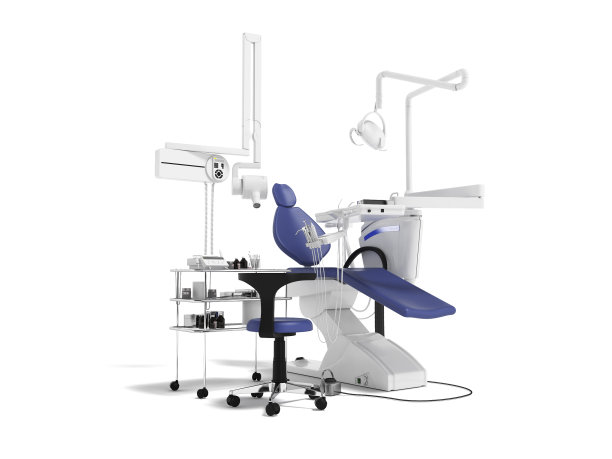Essential Guidelines to Ensure Safe and Effective Dental Filling Procedures for Optimal Oral Health Maintenance
Summary: This article addresses the essential guidelines for ensuring safe and effective dental filling procedures, which are paramount for maintaining optimal oral health. It emphasizes the importance of selecting the right materials, ensuring proper procedural techniques, maintaining patient comfort, and scheduling regular follow-ups. Each section provides detailed insights aimed at both dental practitioners and patients to promote better outcomes and minimize complications. By adhering to these guidelines, the likelihood of achieving durable and effective dental restorations increases significantly, contributing to long-term oral wellness.
1. Selecting Quality Filling Materials Carefully

The choice of filling material plays a critical role in the success of dental filling procedures. Numerous materials are available, including amalgam, composite resins, glass ionomers, and more. Each of these has unique properties, advantages, and disadvantages that practitioners must consider, such as durability, aesthetic appeal, and cost. Understanding these materials ensures the dentist selects the most suitable option for a patient’s specific needs.
Furthermore, it is essential for dental professionals to stay updated on advancements in dental materials. With ongoing research and technology improvements, new filling materials are continuously developed that may offer superior performance. Utilizing the latest materials can result in better esthetics and enhanced durability, leading to improved patient satisfaction and long-term dental health.
Lastly, patient preferences should also be taken into account when selecting filling materials. Some patients may have allergies or sensitivities to certain materials, thus emphasizing the need for an open line of communication between the dentist and the patient. Understanding these factors ensures relevant decisions that cater not only to dental health but also to patient comfort and satisfaction.
2. Mastering Proper Procedural Techniques
Proper procedural techniques are crucial for the effectiveness of dental fillings. Dentists must ensure that the cavity is adequately prepared, cleaned, and disinfected before the filling material is placed. This preparation affects the bond between the tooth structure and the filling material, ultimately influencing the longevity of the restoration.
Additionally, the application of filling material requires precision. Overfilling or underfilling a cavity can lead to complications such as sensitivity or recurrent decay. Dentists must be meticulous while layering the filling and should consider the mechanical properties of the material chosen to ensure optimal results.
Continuing education is fundamental in mastering procedural techniques. Dentists should frequently engage in workshops, conferences, and online courses to hone their skills and learn new techniques. Such investments in education directly translate to improved procedural outcomes and patient trust in their dental care provider.
3. Ensuring Patient Comfort During Procedures
Patient comfort during dental filling procedures cannot be overstated. Anxiety related to dental visits is common among patients, which can affect the overall experience. Dental professionals should prioritize creating a calm and soothing environment to help patients feel at ease. This may include using comforting language, explaining procedures clearly, and providing amenities like soothing music or stress-relief items.
Utilizing effective pain management strategies is another critical aspect of ensuring patient comfort. In addition to local anesthesia, dentists may employ methods such as sedation dentistry for those with heightened anxiety levels. Outside of clinical methods, emotional support from dental staff can significantly enhance the patient experience by reinforcing a sense of safety and care.
Moreover, post-procedural care instructions must be communicated clearly to patients before they leave the office. Patients should be made aware of what to expect following the procedure, including possible side effects and pain management techniques. Proper education post-treatment reduces anxiety and promotes a smoother recovery.
4. Scheduling Regular Follow-Ups for Assessment
Regular follow-up appointments are essential to assess the condition of dental fillings and overall oral health. Dentists should schedule check-ups to monitor the integrity of filling materials and ensure that they remain in optimal condition. Such proactive measures can help identify problems early, preventing more significant complications in the future.
During these follow-ups, the dentist can also evaluate the patient’s oral hygiene practices and offer tailored advice on maintaining the longevity of their fillings. This ongoing relationship fosters better oral health management, allowing issues to be addressed swiftly.
Finally, patients should be encouraged to report any unusual symptoms, such as pain or sensitivity, as they arise. Establishing open lines of communication empowers patients and helps them take an active role in their oral health, reinforcing the importance of preventive care.
Summary:
In summary, this article provides a comprehensive overview of essential guidelines for safe and effective dental filling procedures. By selecting quality materials, mastering procedural techniques, ensuring patient comfort, and scheduling regular follow-ups, dental practitioners can enhance patient outcomes and maintain optimal oral health.
This article is compiled by Vickong Dental and the content is for reference only.



